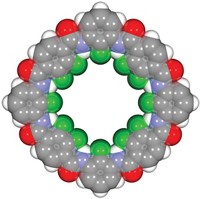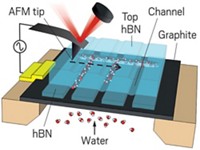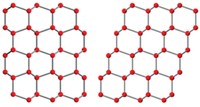Advertisement
Grab your lab coat. Let's get started
Welcome!
Welcome!
Create an account below to get 6 C&EN articles per month, receive newsletters and more - all free.
It seems this is your first time logging in online. Please enter the following information to continue.
As an ACS member you automatically get access to this site. All we need is few more details to create your reading experience.
Not you? Sign in with a different account.
Not you? Sign in with a different account.
ERROR 1
ERROR 1
ERROR 2
ERROR 2
ERROR 2
ERROR 2
ERROR 2
Password and Confirm password must match.
If you have an ACS member number, please enter it here so we can link this account to your membership. (optional)
ERROR 2
ACS values your privacy. By submitting your information, you are gaining access to C&EN and subscribing to our weekly newsletter. We use the information you provide to make your reading experience better, and we will never sell your data to third party members.
Materials
Why Water Fills Nanotubes
Researchers probe origin of puzzling phenomenon and discover emptying, too
by Jyllian Kemsley
July 25, 2011
| A version of this story appeared in
Volume 89, Issue 30

Possible applications of carbon nanotubes (CNTs) for nanofluidics and nanofiltration depend on an important but perplexing phenomenon: Water spontaneously enters CNTs, despite the fact that such nanotubes are made from hydrophobic graphene sheets. Two recent papers explore the effect. One finds that the answer to the mystery lies in water’s unique hydrogen-bonding interactions, while the other shows that at low temperatures CNTs containing water also unexpectedly empty.
In the first paper, researchers report molecular dynamics simulations of water confined to single-walled CNTs of various sizes to compare their entropy, enthalpy, and free energy and pin down the driving force behind spontaneous filling at 300 K (Proc. Natl. Acad. Sci. USA, DOI: 10.1073/pnas.1108073108). Postdoctoral researcher Tod A. Pascal and professor Yousung Jung of Korea Advanced Institute of Science & Technology’s (KAIST’s) Graduate School of Energy, Environment, Water & Sustainability, along with California Institute of Technology chemistry professor William A. Goddard, found that the driving force behind water spontaneously filling CNTs depends on tube diameter.
For tubes smaller than 1.1 nm and larger than 1.2 nm in diameter, Pascal and colleagues calculated that entropy is the key to filling those nanotubes with water. Inside the CNTs, water molecules near the walls are constrained by few hydrogen bonds. Consequently, water in the nanotubes is disordered and has higher entropy compared with the bulk fluid. “This entropic gain dominates any enthalpic loss due to broken hydrogen bonding,” Pascal says.
In tubes smaller than 1.1 nm, the phase of the water is gaslike; for those larger than 1.2 nm, the water looks more like a liquid.
But when it comes to filling CNTs with diameters from 1.1 to 1.2 nm, ice reigns: The nanotube diameter is the same as those of common pentagon and hexagon ice structures, giving rise to what Pascal and colleagues call a “highly diffusing solid.” The enthalpy of hydrogen bond formation to create the ice structures drives water to fill CNTs in this size range.
“The results provide a fundamental grounding to something that had been a puzzle,” says Lydéric Bocquet, a physics professor of the University of Lyon, in France. “It’s very interesting and very counterintuitive.”
Pascal emphasizes that the modeled behavior is entirely dependent on the unique hydrogen-bonding nature of liquid water. “Were water not to have such tetrahedral ordering, the filling of CNTs would be a thermodynamically unfavorable process,” he says. The results are therefore unlikely to hold for other gases or liquids.
In a separate paper, a group led by physics professor Yutaka Maniwa of Tokyo Metropolitan University and Japan Science & Technology Agency combined X-ray diffraction, nuclear magnetic resonance spectroscopy, and modeling studies to put together a phase diagram of water in CNTs with diameters ranging from 1.1 to 2.4 nm (J. Chem. Phys., DOI: 10.1063/1.3593064).
Echoing the results of Pascal and coworkers, Maniwa and colleagues found that the melting point of water in CNTs decreases as diameter increases—they see ice at 300 K for tubes 1.2 nm in diameter but liquid water for CNTs of larger diameter.
Maniwa and colleagues also observed for the first time the reverse of the filling phenomenon: Nanotubes wider than 1.5 nm all spontaneously emptied water at temperatures below 240 K, for reasons that are not yet understood.
Reflecting on the results of the Japanese team, KAIST’s Pascal says, “One could imagine a water nanopump controlled by temperature.” He adds that his group had simulated the same result but hadn’t been confident that their work was accurate. He anticipates a host of future studies to explore the effect further.





Join the conversation
Contact the reporter
Submit a Letter to the Editor for publication
Engage with us on Twitter